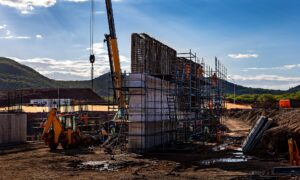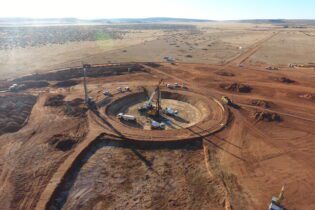The outlook for the South African construction industry remains subdued in the short to medium term as the sector continues to be affected by a lack of implementation of government’s infrastructure delivery plan, as well as the country’s poor economic state and the impact of the Covid-19 pandemic
However, the South African construction sector is a crucial driver of socio-economic development and a key employment multiplier. Databuild, in partnership with Industry Insight has created a monthly dashboard in order to provide insight and monitor trends in the construction industry.Economic snapshot
Treasury published weaker economic growth for 2023 in its 2023 Budget, lowering the GDP forecast to 0.9 per cent from 1.4 per cent, rising to 1.5 per cent in 2024. On average, economic growth is not expected to surpass two per cent in the medium term, averaging below population growth. These predictions are more in line with the South African Reserve Bank’s 0.3 per cent for this year and 0.7 per cent for 2024, suggesting the country is hovering dangerously close to an economic recession. Inflation is expected to subside to around 5.5 per cent in 2023 and 4.9 per cent in 2024, although the risks remain on the upside due to global market volatilities, particularly the US’s stance on future monetary policy decisions. The currency has already buckled under weaker investor confidence due to persistent and aggravated loadshedding, while competing with dollar strength. Added to the woes is the country’s grey listing in February, which will further deter investors and put more pressure on much-needed foreign investment. On the upside, the weaker global growth outlook may support softer oil prices, expected to hover around $80/barrel.South African construction industry
The awarding of several multibillion-rand projects by SANRAL in the Eastern Cape supported a buoyant 175 per cent year-on-year (y-y) increase in the nominal value of construction projects awarded in January 2023. The scale is heavily tilted in favour of the civil sector, where the value of awards increased by more than 300 per cent, against a 21 per cent decrease in the value of building contracts awarded, with declines in both the residential and non-residential market. Tender activity disappointed, however, down 11 per cent y-y, as civil and building tender activity weakened compared to the same month in 2022. But the good news is that around 16 higher CIDB grade projects were awarded that we are aware of, more than doubling the overall percentage value of these tenders, compared to last year.The focus was largely on higher value water projects out to tender representing more than 60 per cent of the total Grade 9 projects out to tender in the month. Slightly fewer projects were also cancelled, and significantly fewer projects listed as postponed. December 2022 was another disappointing month in terms of approvals for private sector building projects, as SQM approved fell 18 per cent y-y, although the approvals for November 2022 was revised upwards from a 0.9 per cent y-y decline to a 3.5 per cent increase.
The residential market this time around is harder hit, with approvals down 29 per cent y-y, while the non-residential sector increased by 14 per cent. This brings the overall annual rate of increase to two per cent for 2022, with the residential market ending flat for the year, compared to an eight per cent increase in the non-residential market. There is a broad consensus that we may be close to the peak of the current rate hike cycle, but weak economic growth, higher inflation and higher interest rates have softened demand for residential building and, given the slowdown in the pipeline, this will impact on the building industry in 2024/25. This year we may still see some benefit from the strong increase in particularly multi-unit housing developments in 2021, with many of these larger scale housing projects breaking ground in 2023.






